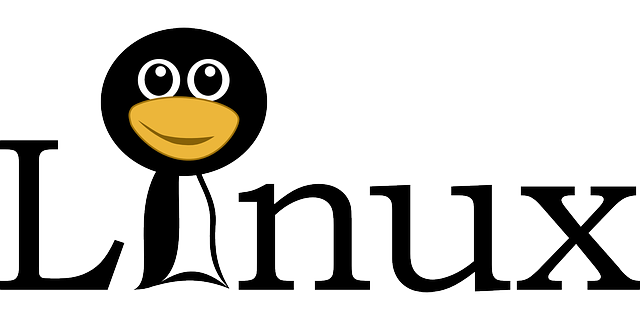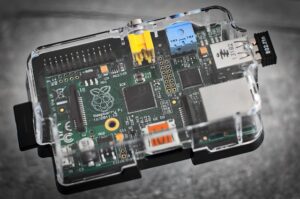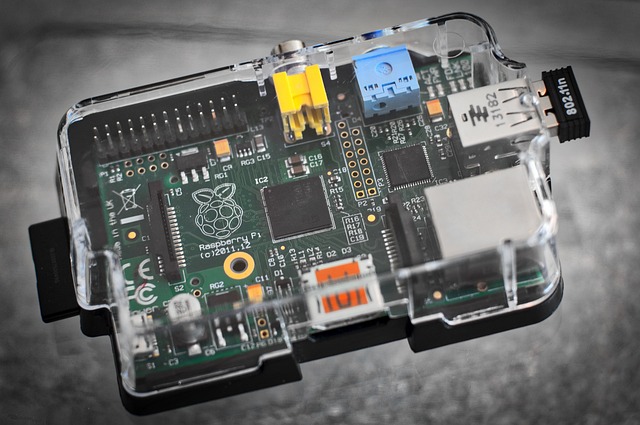The critical role of advanced command-line interfaces (CLIs) in achieving peak performance across various industries is underscored. Mastery of Linux CLIs is essential for professionals seeking to automate tasks, manage systems at scale, and develop custom scripts tailored to sectors like finance, healthcare, manufacturing, and more. The CLI's versatility enables efficient file and system resource manipulation, leading to optimized performance and the creation of responsive, secure industry-specific solutions. Innovation is a key function of the CLI, facilitating rapid prototyping and iteration in development environments, which refines sophisticated solutions. The CLI's scripting and automation capabilities provide a competitive advantage by handling data analysis, system administration, and software deployment tasks with precision and efficiency. Linux CLIs are indispensable for industries demanding such qualities, reinforcing their significance in delivering industry solutions with Linux that cater to specific needs across different sectors, enhancing security, resource management, and system unification, and underscoring the importance of CLI mastery for power users in various domains. The integration of CLI mastery within Linux environments is crucial for operational excellence, system resilience, and peak performance, ensuring that users leverage the best practices in script portability, dependency management, scalability, and defensive programming to deliver robust industry solutions with Linux.
Linux enthusiasts and power users know the command-line interface (CLI) as a gateway to unparalleled control and efficiency. This article delves into the mastery of CLI, highlighting how it drives industry solutions with Linux, offering tailored, robust support across various sectors. From streamlining deployments to customizing user experiences, we’ll explore advanced command-line techniques that elevate productivity and enhance system management. Join us as we navigate through a comprehensive guide for power users looking to harness the full potential of their Linux systems.
- Harnessing the Power of Linux for Tailored Industry Solutions through Advanced Command-Line Interfaces
- The Role of CLI in Streamlining Linux Deployments Across Different Sectors
- Mastering Command-Line Tools: A Comprehensive Guide for Power Users in Various Industries
- Customizing Your Linux Experience: CLI Scripts and Shortcuts for Enhanced Efficiency in Industry Solutions
- Best Practices for Implementing CLI Solutions in High-Demand Linux Environments
Harnessing the Power of Linux for Tailored Industry Solutions through Advanced Command-Line Interfaces

Unleashing the full potential of Linux within industry solutions necessitates a deep dive into the intricacies of its advanced command-line interfaces (CLIs). These powerful tools are the cornerstone for users and developers seeking to craft tailored responses to complex operational challenges. By mastering the CLI, professionals can automate tasks, manage systems at scale, and implement custom scripts that are essential for optimizing performance in various sectors such as finance, healthcare, and manufacturing. The Linux command-line environment is a versatile workspace where power users can leverage the robust set of tools available to execute precise commands, manipulate files, and interact with system resources efficiently. This proficiency not only accelerates workflows but also enables the creation of industry-specific solutions that are both responsive and secure.
Furthermore, the command-line interface in Linux serves as a catalyst for innovation, allowing for rapid prototyping and iteration in development environments. It is here, within this command-centric ecosystem, that the most sophisticated industry solutions with Linux are conceived and refined. Whether it’s data analysis, system administration, or software deployment, the CLI’s ability to script and automate tasks provides a competitive edge. The result is not just a suite of tools but a platform for continuous improvement and adaptation to the ever-evolving demands of modern industries. This adaptability and the depth of control provided by Linux CLIs make them indispensable in environments where precision, reliability, and efficiency are paramount.
The Role of CLI in Streamlining Linux Deployments Across Different Sectors

The command-line interface (CLI) stands as a cornerstone for power users within the realm of Linux, offering unparalleled efficiency and versatility that is particularly beneficial in streamlining deployments across various sectors. In industries where automation and rapid deployment are critical, such as telecommunications or data centers, the CLI’s ability to handle complex tasks with precision and speed is indispensable. Linux, known for its robust performance and stability, integrates seamlessly with the CLI, providing industry solutions that cater to specific needs across different sectors. For instance, in a web hosting environment, command-line tools enable system administrators to automate routine maintenance and deployment tasks, ensuring high availability and consistent performance. Similarly, in the field of scientific research, where computational power is paramount, the CLI allows researchers to run scripts that can process vast datasets more efficiently than graphical user interfaces could. This not only accelerates the pace of discovery but also empowers users with the flexibility to customize their environments and workflows to fit the unique demands of their projects. Across sectors such as finance, healthcare, and education, Linux’s CLI is leveraged to enhance security, manage resources optimally, and integrate disparate systems into cohesive solutions, demonstrating its pivotal role in modern computing ecosystems.
Mastering Command-Line Tools: A Comprehensive Guide for Power Users in Various Industries

Mastering command-line tools is a cornerstone skill for power users across various industries, particularly those that leverage Linux as their primary operating system. These users often find themselves in environments where the graphical user interface may be limited or less efficient, making the command line an indispensable tool for tasks ranging from routine maintenance to complex data analysis. This guide serves as a comprehensive resource for mastering these powerful utilities. It delves into the nuances of command-line syntax, scripting, and best practices that empower users to navigate their systems with precision and speed. For industries such as web development, DevOps, system administration, and data science, command-line proficiency is not just beneficial—it’s essential. The guide provides a structured approach to learning, starting with the basics of shell navigation and progressing to more advanced topics like process management, network operations, and automation. By utilizing industry solutions with Linux, power users can optimize their workflows, streamline repetitive tasks, and unlock the full potential of their systems. This guide is designed to be accessible to both novices looking to expand their skill set and seasoned professionals seeking to refine their command-line prowess.
Customizing Your Linux Experience: CLI Scripts and Shortcuts for Enhanced Efficiency in Industry Solutions

Best Practices for Implementing CLI Solutions in High-Demand Linux Environments

In high-demand Linux environments, implementing command-line interface (CLI) solutions effectively is a cornerstone of operational efficiency and reliability. Power users and system administrators frequently turn to industry solutions with Linux for their robustness and flexibility. Best practices in this domain emphasize the importance of script portability through the use of shebang lines at the top of scripts, ensuring compatibility across different distributions and versions of Linux. Additionally, leveraging package managers like `apt`, `yum`, or `pacman` for dependency management aids in maintaining clean and manageable environments. It’s crucial to design CLI tools with extensibility in mind, allowing for future enhancements and adaptability to evolving industry standards. This approach not only streamlines the integration of new functionalities but also supports the creation of reusable components that can be shared across teams and projects within an organization.
For optimal performance, it’s essential to optimize CLI scripts and applications for efficiency. This includes employing tools like `time` or `perf` for profiling and identifying bottlenecks, as well as writing idiomatic shell code that avoids unnecessary processes and resource consumption. Furthermore, adopting a defensive programming mindset by validating user input and handling errors gracefully is imperative to maintain system stability under load. Regular testing with a diverse set of inputs ensures that CLI solutions remain robust in the face of real-world usage in high-demand environments. By following these best practices, organizations can harness the full potential of industry solutions with Linux, delivering reliable and scalable CLI tools tailored to their specific needs.
In conclusion, the command-line interface (CLI) stands as a cornerstone for power users seeking to unlock the full potential of Linux in various industries. By leveraging advanced CLI tools and custom scripts, professionals can tailor robust industry solutions with Linux that enhance efficiency and streamline deployments across different sectors. The comprehensive guide provided demystifies the mastery of command-line tools, equipping users with the knowledge to navigate these environments with precision. Moreover, best practices for implementing CLI solutions ensure high-demand Linux environments remain agile and responsive to industry needs. Embracing the CLI is not just a technical choice but a strategic one that empowers users to drive innovation and maintain a competitive edge in the rapidly evolving landscape of technology.


























